Gem Mining Near Me: A Comprehensive Guide to Gem Mining in All 50 States
The vast and varied landscapes of the United States are not just scenic wonders; they’re geologic treasure troves waiting to be discovered. Interested in “gem mining near me”? This expansive nation is teeming with gem mining opportunities, revealing a radiant world of jewels, each with its own unique tale. From Montana’s shimmering sapphires to Oregon’s fiery sunstones and North Carolina’s deep emerald hues, the call of gem excavation is irresistible. Each gemstone, scattered across the states, is a testament to the incredible geologic formations and mineral-rich veins hidden just below our feet.
But it isn’t just about the gems themselves. The act of gem hunting is a journey—one of discovery, patience, and the thrilling pulse of excitement when you finally uncover a gemstone in its raw, natural beauty. This article aims to be your compass in this sparkling adventure, guiding you through the wealth of gemstones found across every state. Whether you’re a seasoned gem hunter or a curious novice looking to start, we’ve encapsulated the essence of gem hunting in the USA, providing insights and information to fuel your next expedition. Dive with us into this glittering world and unearth the beauty and stories that await.
Discover Gem Mining Near Me: Where to Find Gem Mines
The United States, with its diverse geological formations spanning coast to coast, boasts an incredible variety of gemstones. Each state has its own set of jewels waiting to be discovered, some of which are uniquely found in its terrain. Here’s a glance at the rich tapestry of gemstones scattered across the nation:
***(Click on a State for an In-Depth Guide)***
| State | Notable Gemstone |
|---|---|
| Alabama | Star Blue Quartz |
| Alaska | Jade |
| Arizona | Turquoise |
| Arkansas | Diamond |
| California | Benitoite (state gem) |
| Colorado | Rhodochrosite |
| Connecticut | Garnet |
| Delaware | Sillimanite |
| Florida | Moonstone (state gem) |
| Georgia | Quartz |
| Hawaii | Black Coral (state gem) |
| Idaho | Garnet |
| Illinois | Fluorite |
| Indiana | Limestone |
| Iowa | Geode |
| Kansas | Heliodor |
| Kentucky | Freshwater Pearl |
| Louisiana | Agate |
| Maine | Tourmaline |
| Maryland | Patuxent River Stone |
| Massachusetts | Rhodonite |
| Michigan | Chlorastrolite (Isle Royale Greenstone) |
| Minnesota | Lake Superior Agate |
| Mississippi | Petrified Wood |
| Missouri | Mozarkite |
| Montana | Sapphire and Agate |
| Nebraska | Blue Agate |
| Nevada | Turquoise and Black Fire Opal |
| New Hampshire | Smoky Quartz |
| New Jersey | Garnet |
| New Mexico | Turquoise |
| New York | Garnet |
| North Carolina | Emerald |
| North Dakota | Fairburn Agate |
| Ohio | Ohio Flint |
| Oklahoma | Barite Rose |
| Oregon | Sunstone |
| Pennsylvania | Moonstone |
| Rhode Island | Cumberlandite |
| South Carolina | Amethyst |
| South Dakota | Fairburn Agate |
| Tennessee | Freshwater Pearl |
| Texas | Blue Topaz |
| Utah | Topaz |
| Vermont | Grossular Garnet |
| Virginia | Nelsonite |
| Washington | Petrified Wood |
| West Virginia | Silicified Mississippian Fossil Coral |
| Wisconsin | Red Coral |
| Wyoming | Nephrite Jade |
These are but a few examples of the gems the country has to offer. Each state, with its unique geological history, offers a chance to unearth different and sometimes rare gemstones. The diversity and richness of the American land have made it a focal point for gem enthusiasts and professional miners alike, seeking the next great find. This vibrant spectrum of gemstones, both popular and rare, is a testament to the geological marvels of the USA and the endless possibilities that lie hidden, waiting to be discovered.
Prime Gem Mining Destinations Near Me
Gem mining is not only a way to unearth beautiful and precious stones, but it’s also a journey through the diverse landscapes and histories of America. From the rugged West Coast to the scenic Midwest and the historical East Coast, each region offers unique and rich gem mining experiences.
West Coast:
- State: California
- Mine: Oceanview Mines
- Gemstones: Tourmaline, Kunzite, Garnet
- Remarks: One of the few places where the public can mine for gemstones themselves.
- State: Oregon
- Mine: Spectrum Sunstone Mines
- Gemstones: Sunstone
- Remarks: Oregon’s state gem is a draw for many.
- State: Washington
- Mine: Stonerose Interpretive Center
- Gemstones: Eocene Age Fossils
- Remarks: Offers a different kind of ‘gem’ mining experience, with fossil digs.
Midwest:
- State: Arkansas
- Mine: Crater of Diamonds State Park
- Gemstones: Diamonds
- Remarks: The only diamond-producing site where the public can search for diamonds.
- State: Minnesota
- Mine: Lake Superior Agate Beds
- Gemstones: Lake Superior Agate
- Remarks: Scenic hunts along the shores of Lake Superior.
- State: Michigan
- Mine: Copper Mines
- Gemstones: Copper, Datolite, Silver
- Remarks: Michigan’s Upper Peninsula is known for its copper deposits.
East Coast:
- State: North Carolina
- Mine: Emerald Hollow Mine
- Gemstones: Emeralds, Aquamarine, Quartz
- Remarks: The only emerald mine in the world open to the public.
- State: Maine
- State: Georgia
- Mine: Graves Mountain
- Gemstones: Rutile, Lazulite, Pyrophyllite
- Remarks: Offers several rock swaps and digs annually.
This list is just a sampling of the many gem mining opportunities spread across America, showcasing the vast mineralogical richness of the country. Whether you’re a seasoned rockhound or a curious beginner, these locations promise memorable experiences and perhaps a precious gem or two to take home.
Tracing the Sparkling Past
The quest for gleaming gems and precious metals is interwoven deeply into the fabric of America’s history. It’s a saga of adventure, ambition, and at times, sheer luck, reflecting the indomitable spirit of the pioneers and prospectors who shaped the nation.
The Great Diamond Fever:
- In the late 19th century, the discovery of diamonds in Arkansas led to a rush reminiscent of the great gold rushes. The Crater of Diamonds State Park, the site of this discovery, remains a testament to this sparkling era and is the only diamond-bearing site in the world where the public can hunt for diamonds.
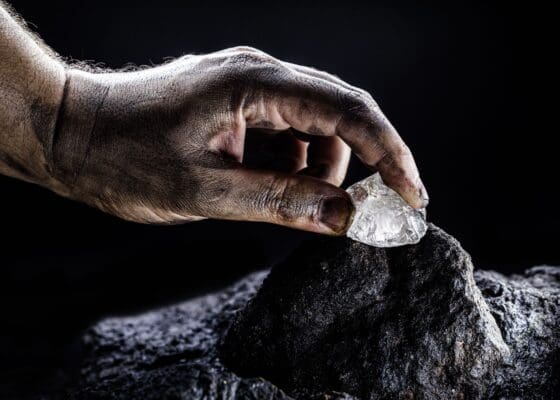
The Gold Rush and Gems:
- The California Gold Rush of 1849 is legendary. Yet, apart from gold, prospectors also unearthed a wealth of gemstones, including tourmalines, sapphires, and garnets. In fact, California’s tourmaline mines became the primary source of the gem for China’s Dowager Empress Tz’u Hsi in the early 20th century.
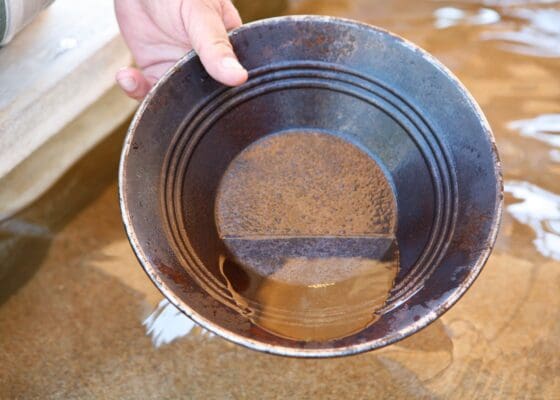
Emeralds of North Carolina:
- North Carolina has been at the forefront of the U.S. gem mining industry. The discovery of significant emerald deposits in the late 19th century, especially in the Hiddenite area, drew miners and gem enthusiasts alike. Some of these emeralds rival the quality of those found in famous global locations like Colombia.
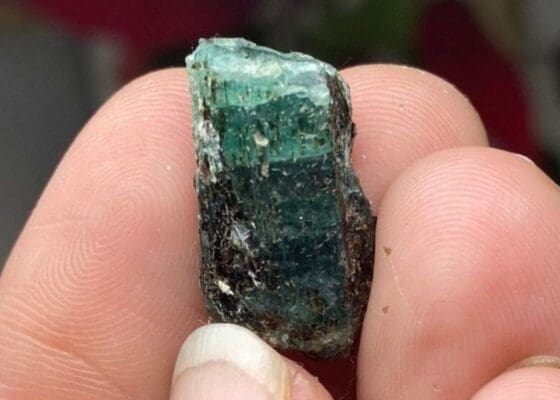
Legendary Discoveries:
- The story of the “Uncle Sam” diamond, the largest diamond ever found in the U.S., weighs 40.23 carats and was discovered in Arkansas in 1924. Its tale is as dazzling as the gem itself.
- The Roebling Opal, discovered in Nevada, is an extraordinary 2,585-carat piece and is now housed in the Smithsonian Institution.
Fortunes and Follies:
- For every success story, there were tales of hardship. Many miners staked everything in the hope of unearthing riches but were met with challenges like harsh weather, inaccessibility, and at times, sheer bad luck. Yet, these tales of perseverance and endurance are as much a part of gem mining’s legacy as the tales of grand discoveries.
Gems, with their allure and promise of wealth, not only brought individuals and communities to prosperous heights but also played a crucial role in shaping regional economies and cultures. The remnants of old mines, ghost towns, and the gems displayed in our museums stand as a testament to a past that sparkled with ambition and gleamed with discovery.
Gem Mining Regulations: A National Overview
As the appeal of gem hunting and searches for “gem mining near me” have surged over the decades, so too has the need for a regulatory framework that ensures sustainability, respects land rights, and protects the environment. While regulations differ from state to state, common themes and overarching federal laws remain consistent.
Common Regulatory Themes:
- Land Ownership & Rights: Before embarking on a gem-hunting expedition, it’s crucial to determine who owns the land. Whether it’s public or private land will greatly affect the permissions needed. On private lands, explicit permission from the landowner is essential.
- Permit Requirements: Many states require permits or licenses to mine for gems, especially for commercial purposes. These permits might come with fees and are often essential even for recreational hunting on public lands.
- Environmental Considerations: Over the years, there’s been a growing emphasis on eco-friendly mining. This means that certain areas, especially those deemed environmentally sensitive, might be off-limits or have strict regulations to prevent ecosystem damage.
- Limitations on Collection: To ensure sustainability, many states have limitations on the amount or type of material that can be collected in a given time frame. For instance, daily bag limits might be enforced.
Notable State Differences:
- Alaska: Known for its rich resources, Alaska has specific claims systems. The state offers claim staking, allowing individuals to “claim” a piece of land for mineral extraction.
- Arkansas: The Crater of Diamonds State Park is unique in that it allows the public to search for diamonds and other gems for a fee, and finders are keepers, regardless of the gem’s value.
- California: With its rich mining history, California has established the Bureau of Land Management (BLM) designated areas for public gem hunting, but with specific rules to prevent over-extraction.
- North Carolina: Given its gem-rich terrains, certain counties in North Carolina have specific regulations, ensuring that mining doesn’t disturb local ecosystems, especially water sources.
Federal Oversight: The General Mining Act of 1872 is a United States federal law that authorizes and governs prospecting and mining for economic minerals on federal public lands. While it primarily addresses hard rock mining, it forms the backbone of mineral extraction regulations and has been adapted over the years to address environmental concerns.
While gem hunting offers the promise of discovery and potential economic gains, it’s crucial to navigate the complex tapestry of regulations that govern this activity. Always consult local and state-specific guidelines before setting out, ensuring that the hunt is legal, ethical, and sustainable.
Essential Tools for a Pan-American ‘Gem Mining Near Me’ Trip
If you’re gearing up for a coast-to-coast gem-hunting adventure, preparation is key. Different regions and environments call for distinct equipment. To ensure safety, efficiency, and a successful haul, it’s essential to have the right tools for each setting.
1. Open Field / Surface Collecting: This is one of the simplest forms of gem hunting where gemstones or minerals are found on the earth’s surface.
- Field Guide: To identify gemstones and minerals.
- GPS or Compass: For navigation.
- Rock Hammer: To break open rocks that may contain minerals.
- Geology Chisel: For splitting rocks.
- Safety Goggles: Protect against rock fragments.
2. Deep Pit / Underground Mining: Going deep underground or into caves requires more specialized and safety-focused equipment.
- Helmet with Light: For visibility and safety.
- Protective Clothing: To guard against rough terrains and abrasive rocks.
- Respirator: Necessary in areas where there’s a risk of gas exposure.
- Sturdy Boots: To protect feet from heavy rocks and provide good grip.
- Pickaxe: For breaking and moving rocks.
3. River / Stream Prospecting: Searching for gems in water bodies requires tools that help sift through sediments.
- Gold Pan: While traditionally for gold prospecting, it’s also handy for sifting smaller stones from river sediment.
- Sluice Box: Helpful if you’re serious about sifting through a lot of material in water bodies.
- Scoop: For collecting sediment from river beds.
- Classifier: Fits on top of a pan to help filter larger rocks and debris.
4. Desert Gem Hunting: Deserts can be treasure troves of geodes and minerals, but the environment demands special precautions.
- Sun Protection: Wide-brimmed hats, sunglasses, and sunscreen are vital.
- Water: Hydration packs or ample bottled water.
- UV Lamp: Some minerals and gems (like opals) can fluoresce under UV light, making them easier to spot at night.
- Dust Mask: To protect against fine sand and dust.
5. Mountainous Regions: Higher altitudes and rugged terrains have their own set of challenges.
- Altitude Sickness Medication: If you’re not acclimated to high altitudes.
- Climbing Gear: Ropes, carabiners, and harnesses if you’re navigating steeper terrains.
- Extended Field Guide: Mountains often have a diverse range of minerals, so a comprehensive guide can be beneficial.
General Tips:
- Backpack: A durable backpack to carry tools, finds, and essentials.
- First Aid Kit: For minor injuries.
- Storage: Ziplock bags, containers, or cloth bags to store and organize your finds.
- Notebook and Pen: To document locations and details of your finds.
No matter where your adventure takes you, always prioritize safety. Research the specific requirements of each site, consult with local experts, and be prepared for the unexpected. Happy gem hunting!
Expert Advice for Aspiring Gem Miners
Gem hunting, like any adventure, is best approached with wisdom born from experience. Over the years, seasoned gem miners have faced various challenges, made exciting discoveries, and accumulated insights that are invaluable for newcomers. Here’s a compilation of their shared wisdom:
1. Research is Your Best Friend:
- Gem Identification: “Before you go, know what you’re looking for. Understand the characteristics of the gems in your chosen location. A piece of quartz might just be a quartz to an untrained eye, but with knowledge, you might realize it’s a topaz.” — Margaret L., gem hunter for 25 years.
2. Respect the Land and Local Regulations:
- Environmental Care: “Always remember we’re visitors in these terrains. If we want future generations to enjoy gem hunting as we do, it’s our responsibility to ensure we don’t harm the environment.” — John A., miner and environmentalist.
3. Safety Always Comes First:
- Preparedness: “I’ve seen folks come in sandals to mine in rough terrains. Always wear protective clothing, and sturdy shoes, and never mine alone in isolated areas.” — Derek T., gem hunter for 40 years.
4. Network and Learn:
- Community Insights: “Join local gem hunting clubs or online forums. There’s so much to learn from others’ experiences. Plus, they might share that secret spot or two if you’re lucky!” — Rita H., gem enthusiast and community leader.
5. Patience is a Virtue:
- Persistence Pays: “Gem hunting isn’t always about that big, dazzling find. It’s the thrill of the hunt, the joy of discovery, even if it’s a tiny gem. Patience often leads to the best rewards.” — Carlos M., professional gem miner.
6. Always Be Prepared for the Unexpected:
- Weather & Terrain: “Check weather forecasts. Many times, I’ve seen sunny days turn into thunderstorms. And always inform someone about where you’re going and when you plan to return.” — Naomi F., gem hunter and safety instructor.
7. Quality Over Quantity:
- Valuable Finds: “It’s not about how many gems you find, but the quality of those gems. A single, high-quality gem can be worth more than a bag full of average stones. Focus on understanding quality.” — Greg J., gem appraiser.
8. Stay Updated:
- Evolving Landscape: “Terrains change, new sites are discovered, old ones get exhausted. It’s a dynamic landscape. Regularly updating your knowledge ensures you’re always at the right place at the right time.” — Sophie K., geologist and gem hunter.
9. Care for Your Finds:
- Post-Hunt Care: “Cleaning and storing your gems properly is as crucial as finding them. Understand each gem’s characteristics. While some might need just a gentle wash, others might require more care.” — Liam V., gemologist.
10. Enjoy the Journey:
- It’s Not Just About the Gems: “The landscapes, the thrill, the memories made, and yes, the gems – it’s a complete package. Relish every moment. Every hunt is unique, and that’s what makes it special.” — Irene P., recreational gem hunter.
In the quest for glittering treasures, these insights serve as guiding lights, ensuring that every gem-hunting journey is not just rewarding but also safe, responsible, and enriching.
Cherishing Your Treasures: Post-Discovery Care
As the interest in ‘gem mining near me’ grows, it’s essential to know that once you’ve unearthed a gem, the journey doesn’t end there. Proper post-discovery care can elevate your find from a dusty rock to a sparkling treasure. It’s paramount to maintain its value and beauty. Here’s a comprehensive guide on how to cherish and care for your gemstones:
1. Identification is Key:
- Understand What You Have: Before any cleaning, ascertain what kind of gem or mineral you have. Some gems are sensitive to specific cleaning methods, and you wouldn’t want to damage your precious find.
- Consult Experts: Gemologists or members of local gem clubs can assist in identification. They might have tools like refractometers or specific knowledge that can pinpoint what your discovery is.
2. Cleaning Your Gems:
- Soap and Water: For many gems, lukewarm water, mild detergent, and a soft brush are enough. Gently scrubbing the gem will remove most of the dirt.
- Ultrasonic Cleaners: While effective for many hard gems like diamonds, they can be damaging to softer or included gems. Always consult an expert before using.
- Avoid Harsh Chemicals: Gems like pearls, opals, and turquoise can be damaged by acids and strong chemicals.
3. Storing Your Finds:
- Separate Pouches: Some gems can scratch others. Store gems separately in soft pouches or lined jewelry boxes.
- Away from Light and Heat: Some gems, like amethysts and kunzites, can fade with prolonged exposure to sunlight. Additionally, heat can damage certain gems.
4. Valuation and Appraisal:
- Know Its Worth: Especially if you suspect you have a rare or valuable find, it’s wise to get it appraised. Certified gemologists can provide information on the quality and value of your gem.
- Insurance Consideration: If your gemstone turns out to be valuable, consider adding it to your home insurance or getting a separate policy.
5. Faceting, Cutting, or Polishing:
- Enhancing Beauty: Sometimes, gems can be faceted or polished to enhance their beauty and value. If you’re considering this, consult with experts and choose reputable gem cutters.
- Natural vs. Treated: Be aware that some treatments to enhance the gem’s appearance might affect its valuation. Always disclose treatments when selling or getting an appraisal.
6. Display or Set:
- Jewelry Setting: Turn your find into a piece of jewelry. Work with jewelers who understand the properties and care needs of your specific gem.
- Display Collections: If you’re building a collection, consider getting display cases. It not only showcases your finds but also protects them.
7. Documenting Your Discovery:
- Maintain a Log: Note down where and when you found the gem, its characteristics, weight, and any other relevant details. This can be invaluable for future reference or if you decide to sell or trade.
Remember, every gem, whether it’s a common quartz or a rare ruby, carries the memories of the hunt and the story of the land it came from. By offering it the right care, you’re not only preserving its physical beauty but also the rich tapestry of experiences it symbolizes.
Legendary Gemstone Finds Across the States
From coast to coast, the U.S. has been the birthplace of some truly breathtaking gemstone discoveries. These tales not only echo the immense geological wealth of the nation but also inspire countless treasure hunters to pursue their dreams. Here are some of the most legendary gemstone finds:
1. The Uncle Sam Diamond (Arkansas):
- Found in the Crater of Diamonds State Park in 1924, the “Uncle Sam” is the largest diamond ever discovered in the U.S. Weighing an impressive 40.23 carats in its rough form, this gem was later cut to a beautiful 12.42-carat emerald-shaped stone.
2. The American Golden Topaz (Utah):
- Among the largest faceted gems in the world, this 22,892-carat (about 10 lbs) marvel was sourced from Minas Gerais, Brazil, but cut and faceted in the U.S. Displayed at the Smithsonian, its golden hue and staggering size make it a marvel of gemology.
3. The Roebling Opal (Nevada):
- Discovered in the early 20th century, the Roebling Opal from Virgin Valley is a breathtaking specimen weighing approximately 2,585 carats. Its mesmerizing play-of-color, dominated by reds and greens, secured its spot in the National Gem Collection at the Smithsonian.
4. The El-Dorado Aquamarine (Colorado):
- From the renowned Mt. Antero location in Colorado, the El-Dorado Aquamarine is a testament to the region’s mineral-rich heritage. This 10-inch crystal, clear and brilliantly blue, is one of the finest North American aquamarines ever found.
5. The Morenci Turquoise (Arizona):
- Morenci Mine has produced some of the most iconic turquoise specimens. The unique character of Morenci turquoise, often embedded with pyrite, gives it a visual appeal that has enchanted Native American jewelry artists and collectors worldwide.
6. The Smithsonian Garnet (New York):
- This almandine garnet, weighing approximately 10 lbs, was discovered in the Ruby Mountain region. Its deep red hue and near-flawless clarity make it one of the most revered garnet specimens in existence.
7. The Lime Green Beryl (Maine):
- Also known as Heliodor, this gem was unearthed from the Plumbago Gem Pit in Newry, Maine. Weighing over 80 carats and exhibiting an intense greenish-yellow hue, it is one of the finest heliodors from North America.
8. The Blue Moon Diamond (N/A, but cut in the U.S.):
- While this diamond’s origin is not in the U.S., its cutting and transformation occurred in the States. At 12 carats, its rare blue hue is the result of traces of boron within its carbon structure, making it one of the world’s most coveted gems.
Each of these legendary finds underscores the rich geological tapestry of the United States. They serve as luminous reminders of the treasures hidden beneath our feet and the boundless possibilities that gem hunting offers.
Expanding Your Gem Mining Horizons
While the United States is a prime destination for those searching for “gem mining near me”, its vast and diverse array of gemstone locales also tempts enthusiasts to explore beyond national borders. Globally, the world is peppered with regions rich in unique and magnificent gem finds, many in countries neighboring the U.S. If you’re looking to broaden your gem-hunting horizons beyond local spots, here’s a snapshot of what the broader continent offers:
1. Canada:
- Rich Finds: Canada is known for its diamonds from the Northwest Territories, ammolite in Alberta, and labradorite in Newfoundland and Labrador.
2. Mexico:
- Stellar Discoveries: Mexico has a cornucopia of gem offerings, from fire opals to Mexican turquoise and beautiful ambers.
3. Brazil:
- Gemstone Capital: Brazil, in South America, is a powerhouse in the gem world, with finds ranging from emeralds, tourmalines, amethysts, to the very rare Paraíba tourmaline.
4. Colombia:
- Emerald Empire: Colombia is renowned worldwide for its high-quality emeralds. The green gems from this region are often considered unparalleled.
5. Guatemala:
- Jade Treasures: Historically significant and culturally revered, Guatemala is a primary source of jadeite jade in unique blue and green hues.
6. Dominican Republic:
- Caribbean Blue: This island nation is home to Larimar, a striking blue pectolite stone found nowhere else in the world.
7. Belize:
- Ancient Allure: Belize has a history of jade exploitation by the ancient Maya, and recent discoveries indicate potential reserves waiting to be explored.
Expanding your gem hunting journey internationally not only enriches your collection but also offers a deeper understanding of global geology, history, and cultures. As you consider these global pursuits, ensure you’re well-versed with international gem trading and transportation regulations to ensure a smooth and rewarding experience.
Conclusion: The Future of ‘Gem Mining Near Me’ Adventures
Gem hunting is far more than a mere quest for dazzling treasures; it’s a journey through time, geology, and personal discovery. As we traverse the vast expanse of the USA, from the craggy coasts of Maine to the sun-kissed deserts of Arizona, every dig brings forth tales buried deep within the Earth—tales of epochs gone by, of the relentless forces of nature, and of the inestimable wealth hidden just beneath our feet.
The thrill of discovery, the palpable excitement as the soil gives way to reveal glimmers of the unknown, the tales of legendary finds, and the hope of making history oneself—all these elements combine to make gem hunting an unforgettable adventure. It’s about connecting with the land, understanding its secrets, and reaping the rewards of patience and diligence.
However, the charm of gem hunting isn’t restricted to vast expeditions or elaborate mining ventures. The magic can be captured right in the heart of our homes. With innovations like the home gem mining kit, enthusiasts can experience the exhilaration of discovery without venturing far. Such kits whisk us away on miniature adventures, letting imaginations soar and passions ignite, all from the comfort of one’s abode.
In essence, whether you’re scaling the mountains, wading through rivers, traveling across states, or simply sifting through a gem kit at your dining table, the enchantment of gem hunting remains undiminished. It’s a testament to the timeless allure of Earth’s treasures and our undying curiosity to uncover them.

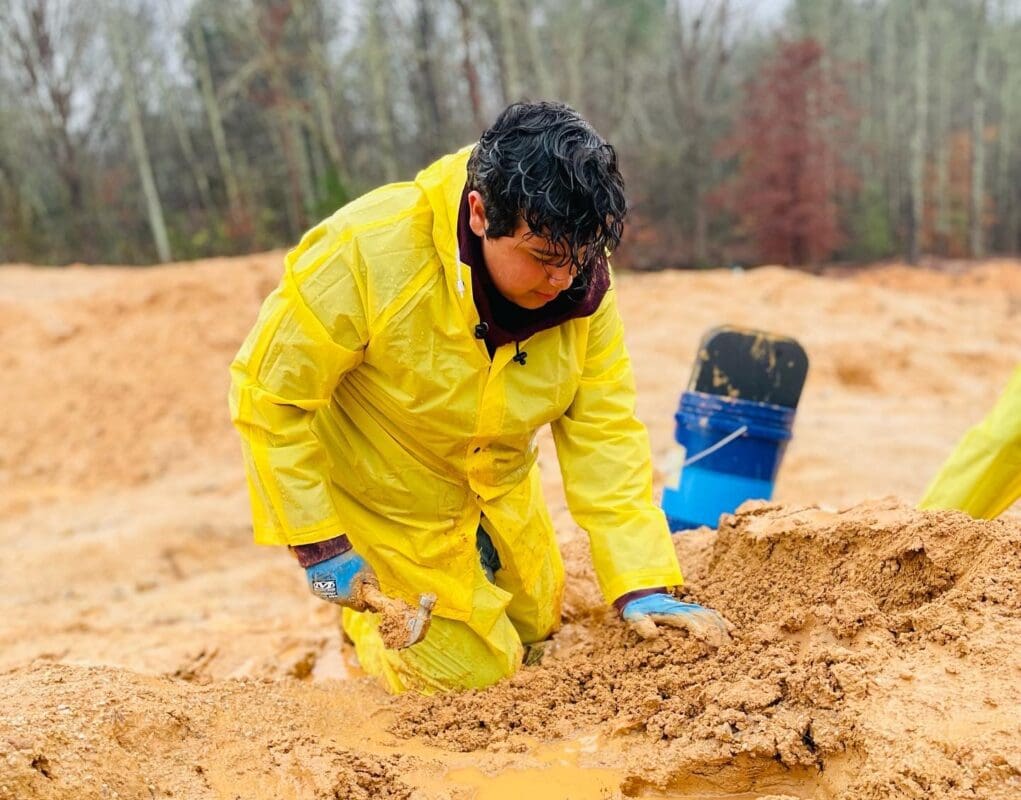
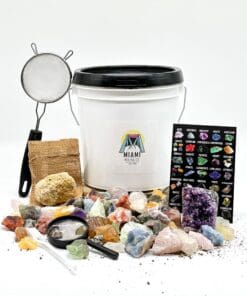
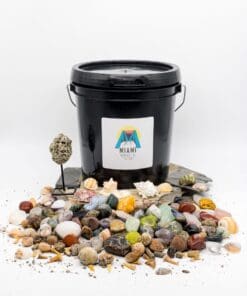
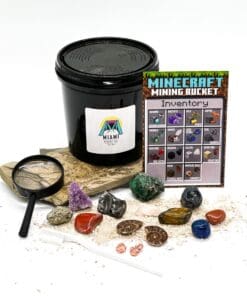
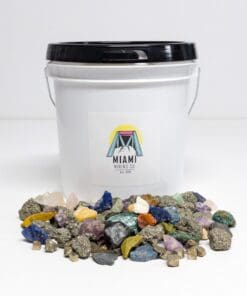
E’ la prima volta che mi avvicino a questo mondo. Vorrei un anello di orthoceras, se possibile. Grazie.
I’m delighted to hear you’re exploring the fascinating world of gem mining! An orthoceras ring is indeed a unique and beautiful choice, reflecting the ancient and natural beauty of our earth. While my guide focuses on gem mining locations, I would recommend checking out local gem shops or artisans who specialize in fossil jewelry for something as specific as an orthoceras ring. Do you have any favorite gemstones or fossils you’re particularly drawn to? Sharing your interests can help us connect you with the right resources or recommendations!
Sono felice di sapere che ti stai avvicinando a questo affascinante mondo! Un anello di orthoceras è davvero una scelta unica e bellissima, che riflette la bellezza antica e naturale della nostra terra. Anche se la mia guida si concentra sulle località dove si può fare ricerca di gemme, ti consiglierei di controllare negozi di gemme locali o artigiani specializzati in gioielleria fossile per trovare un anello di orthoceras. Hai qualche gemma o fossile preferito che ti attira in modo particolare? Condividere i tuoi interessi può aiutarci a collegarti con le risorse giuste o a darti raccomandazioni!